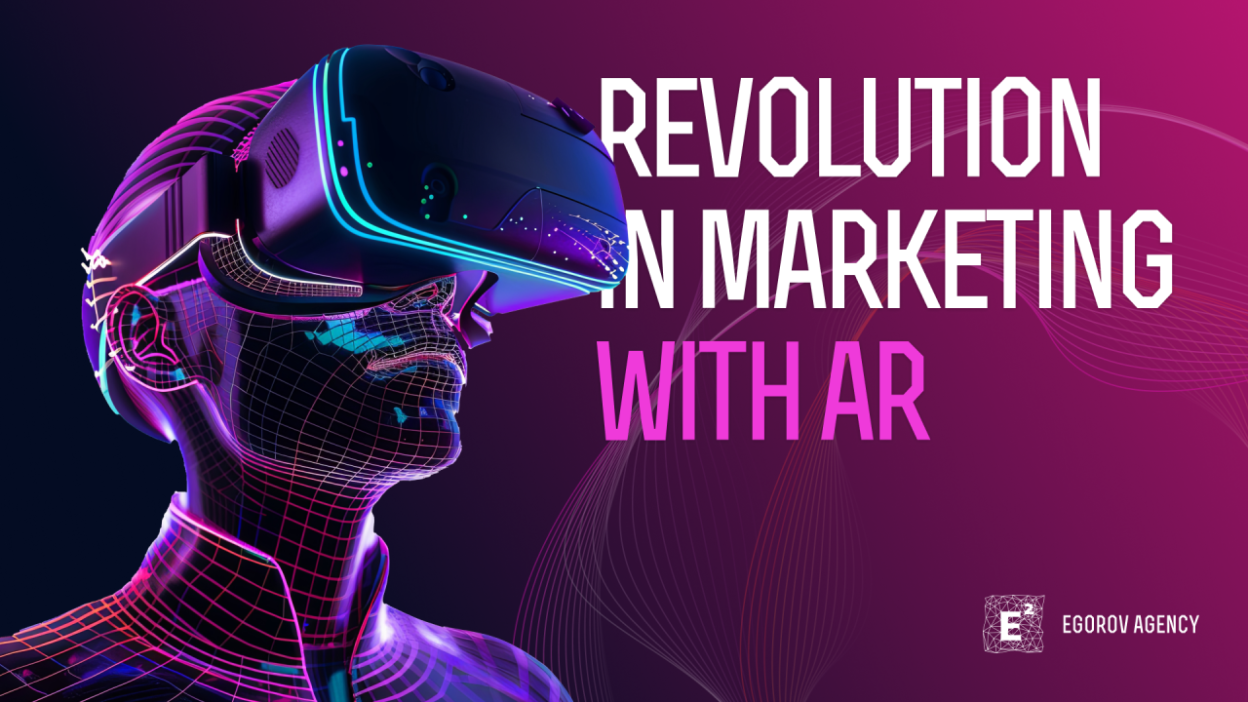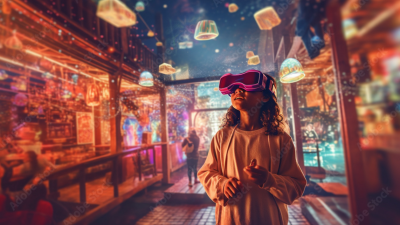Our connections with others have always been mediated by technology. From written letters to telephone calls to video chats, each technological leap has transformed how we establish and maintain relationships. Yet augmented reality represents something fundamentally different – not merely connecting across distances, but reshaping the quality and nature of presence itself.
As AR technologies mature beyond novelty applications and entertainment, they’re beginning to transform our most personal interactions. This shift toward augmented intimacy raises profound questions about human connection in the digital age.
Beyond Physical Presence: The New Togetherness
Traditional distance communication has always felt like exactly that – communication across a gap. Video calls improved this by adding visual cues, but augmented reality introduces something revolutionary: shared digital environments that overlay our physical spaces.
New AR platforms enable friends to “share” a living room despite being continents apart. Digital representations – increasingly sophisticated avatars – can occupy the same visual field as your physical surroundings. This creates a sense of togetherness that transcends what previous technologies could achieve.
These experiences feel qualitatively different from video calls. When your friend’s digital representation sits on your actual couch, gesturing and interacting with your environment, the brain processes this presence differently than a face in a rectangular screen.
Emotional Texture in Digital Spaces
Perhaps most fascinating is how AR can transmit emotional nuance that gets lost in text or even video communication. Spatial audio makes conversations feel natural, with voices coming from the direction of each person’s avatar. Hand gestures and body language, increasingly well-captured by new AR systems, provide the subtle emotional texture that humans rely on for deep connection.
As explored at ARMarketingTips.com, these technologies are rapidly advancing beyond gimmicks toward genuine emotional resonance. The intimacy possible in these spaces has surprised even the developers creating them.
The cognitive impact cannot be overstated. When your brain registers someone as “present” in your space, even knowing they’re a digital representation, it triggers social and emotional responses similar to actual physical presence. This phenomenon creates connection opportunities previously impossible without travel.
Redefining Relationship Geography
Long-distance relationships have historically faced significant challenges maintaining intimacy. AR technologies offer new possibilities for couples separated by geography. Beyond video calls, partners can now share experiences in merged digital/physical spaces.
Imagine cooking dinner “together” while physically apart – seeing your partner’s hands guiding yours through a new recipe, or feeling their presence as you watch the same sunset from different continents. These shared moments create relationship continuity that was previously difficult to maintain across distances.
Family connections benefit similarly. Grandparents can read bedtime stories while seemingly sitting next to their grandchildren’s beds. The digital representation allows for eye contact, physical gestures, and environmental awareness that video calls simply cannot provide.
The Neuroscience of Digital Intimacy
Research has begun examining how these augmented interactions affect our brains. Initial findings suggest that well-designed AR social experiences activate many of the same neural pathways as physical presence. The brain’s mirror neuron system – crucial for empathy and connection – responds to realistic digital representations in shared spaces.
This neurological response helps explain why people report feeling genuinely connected in augmented environments, often describing the experience as fundamentally different from video calls or social media interactions. When your brain processes someone as “here,” even partially, it creates emotional responses that foster authentic connection.
The implications extend beyond casual socializing. Therapeutic relationships are being transformed as mental health professionals explore augmented sessions that allow for more natural interaction than traditional telehealth while maintaining geographic flexibility.
Intimate Communication Reimagined
AR enables new communication dimensions beyond mimicking physical presence. Partners can share biometric data through their avatars – heartbeats visualized as subtle glows, emotional states suggested through ambient colors. These intimate signals create connection layers impossible in traditional physical interactions.
Digital gifts and environmental modifications allow for new expressions of affection. Leaving virtual flowers that bloom when your partner enters a room or notes that appear in specific locations creates persistent emotional touchpoints that transcend the ephemeral nature of text messages.
Shared creative spaces represent another frontier in augmented intimacy. Couples or friends can collaborate on art, music, or design projects in shared AR environments, experiencing the particular closeness that comes from creating together – regardless of physical location.
The Coming Challenges to Relationship Norms
As these technologies become mainstream, they will inevitably disrupt established relationship patterns and expectations. When geographic proximity becomes less relevant to relationship quality, how will we rethink commitments, living arrangements, and community connections?
The ability to maintain deeper connections across distances may reshape migration patterns and career choices. If meaningful presence no longer requires physical proximity, decisions about where to live or work take on different dimensions. Families could remain emotionally connected despite global dispersion in ways previously impossible.
Privacy boundaries become more complex in augmented relationships. When your partner can potentially “visit” your space anytime, new questions emerge about digital access and boundaries. The concept of “being alone together” takes on new meaning when presence becomes partially optional and highly customizable.
Authentic Connection in Augmented Spaces
The philosophical question at the heart of augmented intimacy is whether these connections represent something authentic or merely sophisticated simulacra of genuine relationships. The evidence suggests the answer isn’t binary.
Users consistently report meaningful emotional experiences in shared AR spaces – genuine laughter, tears, and moments of connection. The technology mediates but doesn’t necessarily diminish these experiences, similar to how telephone calls represent authentic communication despite their limitations.
What emerges is not a replacement for physical togetherness but an expansion of our connection possibilities. The tactile dimension remains irreplaceable for many forms of intimacy, but augmented interactions offer complementary connection pathways that expand our relational capabilities.
The Relationship Skills of Tomorrow
As augmented intimacy becomes more common, we will develop new social competencies. Understanding how to create emotional presence through partially digital means will become an essential relationship skill. Learning to read emotional cues in augmented environments will be as important as understanding body language is today.
New etiquette will emerge around augmented presence. When is it appropriate to “drop in” to someone’s space? How do we signal availability or unavailability for augmented interaction? These social norms are already developing organically in early-adopter communities.
Education in emotional intelligence will necessarily expand to include how we express and perceive feelings in augmented spaces. The coming generation will navigate hybrid physical-digital relationships with fluency that may seem foreign to those who grew up with clearer boundaries between online and offline connections.
Beyond the Uncanny Valley
Early AR social platforms struggled with the “uncanny valley” effect, where almost-but-not-quite-realistic avatars created discomfort rather than connection. Recent advances have begun overcoming this barrier through two approaches.
Some platforms embrace stylized representations that don’t attempt photorealism but capture essential expressive qualities. Others push toward increasingly sophisticated realism supported by better hardware and AI interpretation of subtle facial movements.
Both approaches are finding success in different contexts, suggesting that augmented intimacy doesn’t require perfect simulation – it requires meaningful emotional bandwidth that allows genuine expression and connection.
Conclusion: The Intimacy Revolution Has Already Begun
The augmented intimacy revolution isn’t a speculative future – it’s already underway in research labs, early commercial platforms, and experimental art projects. As AR headsets become lighter, less obtrusive, and more powerful, these technologies will gradually normalize and reshape our expectations about connection.
This transformation represents neither utopia nor dystopia but rather an expansion of human relational capacity. Like all communication technologies before it, augmented reality will amplify certain aspects of connection while potentially diminishing others.
The most profound change may be conceptual – a shift in how we understand presence itself. As the boundaries between physical and digital connection blur, we’re entering an era where togetherness becomes increasingly detached from geographic coincidence. This fundamental shift will reshape not just individual relationships but potentially the very structure of human communities in the decades ahead.




